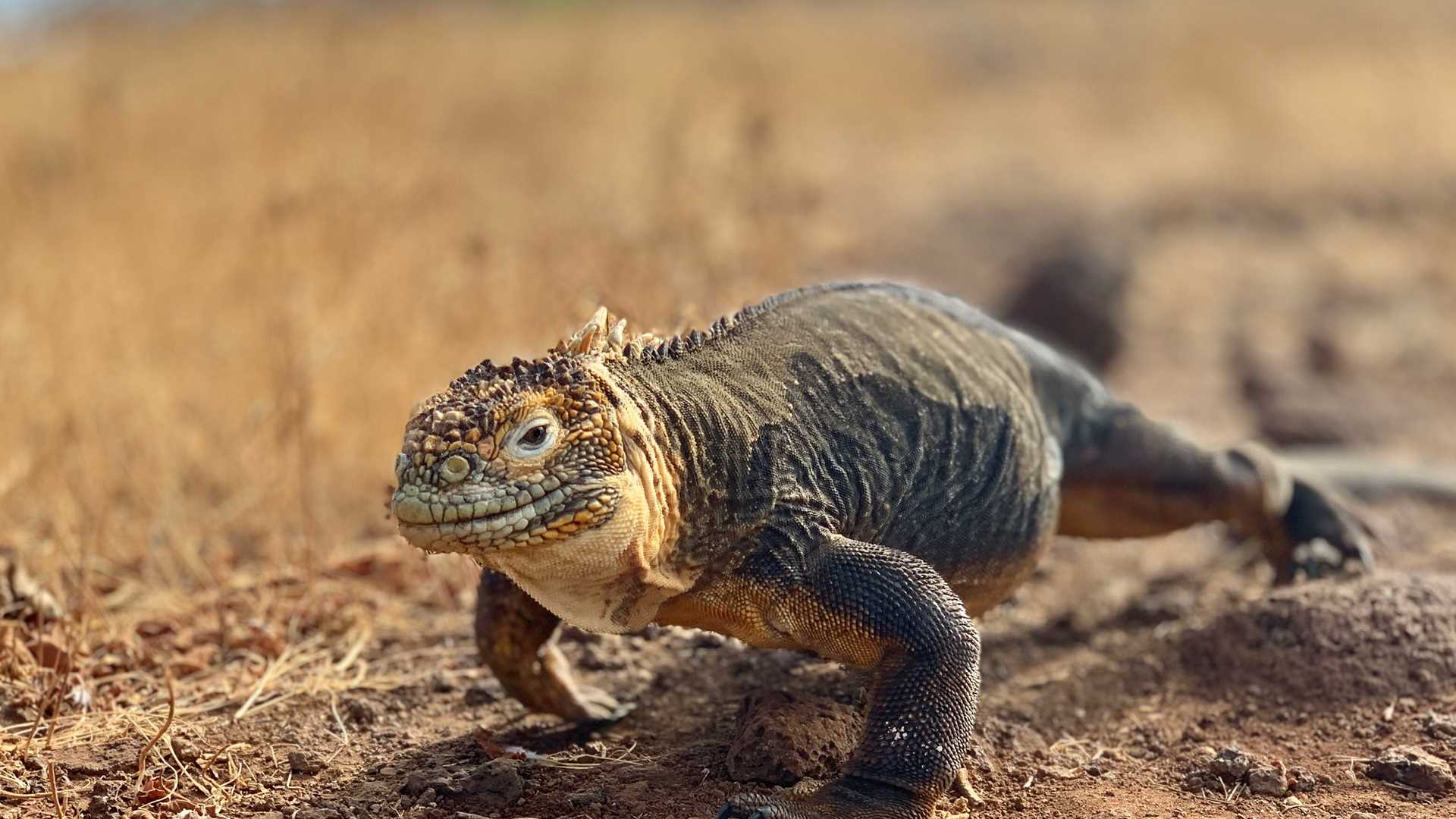Today National Geographic Endeavour II explored North Seymour and Rabida Islands. As we stepped onto North Seymour, we were greeted by numerous magnificent frigatebirds floating overhead. The island's distinct arid landscape is a haven for some of the most iconic Galapagos species; accordingly, we saw blue-footed boobies with young chicks in the nest. The red-throated male frigatebirds made their displays, trying to attract potential mates. Wandering further, we spotted land iguanas blending seamlessly with the rocky terrain, showcasing their impressive survival adaptations.
Our second stop, Rabida Island, embraced us with its striking red sand beach. The distinctive hue, a result of oxidized iron, lent an otherworldly charm to the island's shores. Snorkeling off Rabida's coast proved to be an underwater kaleidoscope of marine life, as we found ourselves surrounded by schools of razor surgeonfish and Pacific green sea turtles. Here, young Galapagos sea lions played in the surf while brown pelicans plunge-dived for their daily sustenance. Venturing inland allowed us to visit a brackish pond and a resident American flamingo population with a few grey fledglings. Towering prickly pear cacti and other arid vegetation adorned the surrounding terrain.
As the sun dipped below the horizon, painting the sky in hues of grey and orange, we couldn't help but feel privileged to have been part of this expedition. The Galapagos remains a testament to the resilience of nature.







